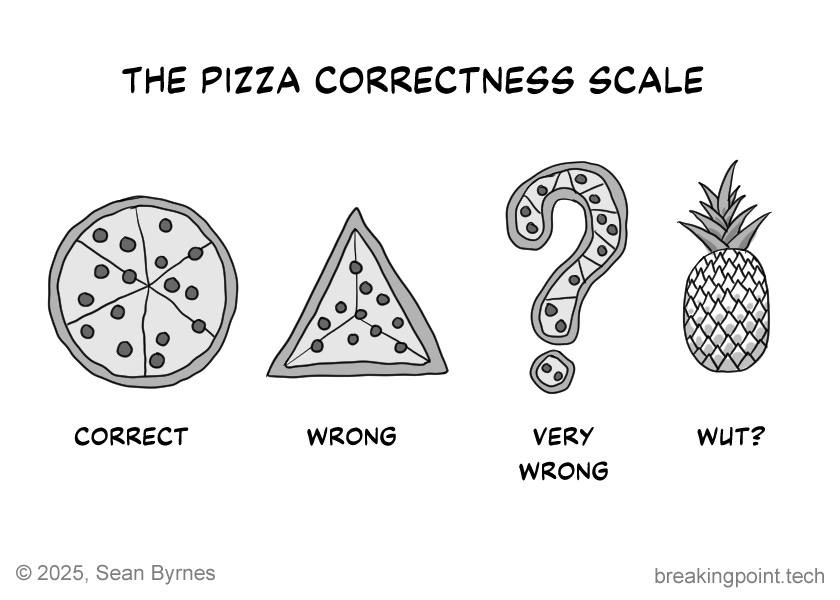The Degrees of Being Wrong
You can be wrong by a little or a lot, and the difference matters.
If you liked reading this, please click the ❤️ button on this post so more people can discover it on Substack. Thanks!
I am wrong all the time. Yes, I know it’s hard to believe but it’s true! It’s partly because I take a lot of risks, but mostly because the cost of being right is often far too high.
Early in my career, I thought it was the job of a leader to make the right decision every time. I would agonize over every decision, doing extra research and my best to make sure I wasn’t wrong. I spent late nights and weekends trying to invest as much time as possible into everything I did.
It was all a waste of time.
The reality is that being perfectly right 100% of the time is never worth the effort. Yes, being wrong can be costly but being perfect can be even more expensive! Knowing the difference is the key to being a great leader.
For each decision you face, there are correct options, incorrect options and some options that are in between. They exist on a spectrum of both correctness and cost:
Perfectly Correct: Unachievable. It would take too much time, and even then be impossible.
Mostly Correct: This is great! If all your decisions fall here you will be winning.
Partly Correct: Good enough for most decisions. A good balance of time and results.
Neutral: You can do better. Take more risks.
Partly Wrong: Unavoidable, and typically acceptable if you’re right about the right things.
Mostly Wrong: Probably bad, do not recommend.
Perfectly Wrong: To be avoided!
For example, let’s say you’re hiring for a VP of Sales and you have 3 great candidates who have all completed your process. They all are amazing and did well on your interviews, but who do you choose? You can only choose one!
You could spend weeks trying to do more background research, doing more interviews, trying to make the perfect decision. But, those candidates will likely get tired of your process and look to work elsewhere! In trying to be perfect you will waste a lot of time.
Instead, you could hire one of them realizing that having 3 great candidates means any one of them will likely be amazing. And, if the person doesn’t work out, you know how to find great people to replace them.
Likewise, let’s say you’re trying to decide on a color for your new logo. Don’t waste time on color theory and market research. Pick a color you like! No one really cares about what color it is other than you, and perfect colors are entirely subjective.
In both cases your decision might be partly wrong, but the cost of being 100% right was too high.
Being afraid of mistakes can be paralyzing, and it takes time to get comfortable with being wrong. You don’t want to make cavalier decisions and hope for the best, but making decisions that exist on a spectrum between correct and wrong is what it means to be a leader.
After all, if it was clear what the correct answer was then we wouldn’t need leaders to make decisions.
For more on Making Decisions, see:



I have an engineering background, and I still find myself trying to fully understand what's going on and what possible options we can take when facing a problem. This article reminds me of the importance of thinking through whether it's worth it before diving into detailed research. Thank you for this valuable reminder!
The idea of the unacheviabilty of being 100% correct is fundamental to The Unknowable Truth.